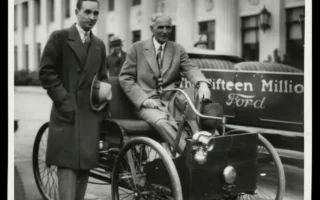Introduction:
Romanesque architecture, with its robust and distinctive style, flourished in Europe during the Middle Ages, particularly from the 10th to the 12th centuries. Characterized by its sturdy construction, round arches, and thick walls, Romanesque architecture left an indelible mark on the landscape of medieval Europe. Among the myriad elements that define Romanesque architecture, certain forms stand out as common features, reflecting the architectural principles and cultural influences of the time. In this exploration, we’ll delve into some of the key forms that are prevalent in Romanesque architecture, shedding light on their significance and enduring legacy.
1.The Rounded Arch: A Hallmark of Romanesque Design
Definition and Characteristics: One of the most iconic features of Romanesque architecture is the rounded arch, which replaced the earlier Romanesque architecture. The rounded arch, often seen in doorways, windows, and arcades, imparts a sense of solidity and strength to Romanesque structures.
Structural Advantages: The rounded arch distributes weight more evenly than its pointed counterpart, allowing for the construction of larger and more stable buildings. This structural innovation facilitated the creation of grand cathedrals, monastic complexes, and fortified castles during the Romanesque period.
Symbolism and Tradition: Beyond its functional utility, the rounded arch carries symbolic significance in Romanesque architecture, evoking themes of eternity, unity, and divine order. Its use harkens back to the arches of Roman aqueducts and triumphal arches, linking Romanesque buildings to classical antiquity.
2.Thick Walls and Buttresses: Fortifying Romanesque Structures
Defensive Architecture: Romanesque buildings often feature thick walls and buttresses, which serve both structural and defensive purposes. These sturdy walls provided protection against enemy attacks and supported the weight of heavy stone vaults and roofs.
Buttresses and Flying Buttresses: Buttresses, protruding supports built against the exterior walls, were commonly used to reinforce the walls of Romanesque churches and cathedrals. In some cases, flying buttresses, which transfer lateral forces away from the walls, were employed to further stabilize large vaulted structures.
Visual Impact: The massive walls and buttresses of Romanesque buildings contribute to their imposing and monumental appearance, instilling a sense of awe and reverence in visitors. The contrast between light-filled interiors and fortress-like exteriors creates a striking architectural juxtaposition.
3.Elaborate Portal Sculptures: Entrances as Works of Art
Portal Design: Romanesque churches are renowned for their elaborately decorated portals, which serve as the main entrances to the sacred space. These portals often feature intricate carvings, sculptures, and reliefs depicting biblical scenes, saints, and symbolic motifs.
Iconographic Program: The sculptures adorning Romanesque portals were not merely decorative but also served a didactic function, conveying religious teachings and moral lessons to the faithful. The rich symbolism and narrative imagery invite worshippers to contemplate the mysteries of faith as they enter the sacred space.
Artistic Expression: Portal sculptures showcase the skill and craftsmanship of medieval artisans, who carved intricate details into the stone with remarkable precision and artistry. These masterpieces of Romanesque art continue to captivate and inspire viewers centuries later.
4.Tower and Spire: Reaching for the Heavens
Vertical Emphasis: Romanesque churches often feature towers and spires that soar skyward, symbolizing the aspiration to reach heaven and the celestial realm. These vertical elements serve as visual focal points, drawing the gaze upward and inspiring feelings of awe and reverence.
Bell Towers: Towers were not only architectural features but also functional elements housing bells used for calling worshippers to prayer and marking the passage of time. The rhythmic tolling of bells became an integral part of daily life in medieval towns and villages.
Symbolism of Height: The towering height of Romanesque churches reflects the medieval worldview, which emphasized the hierarchical order of the universe and the supremacy of the divine. The vertical dimension of Romanesque architecture reinforces the spiritual aspirations of the faithful and serves as a tangible expression of their devotion.
5.Frescoes and Mural Paintings: Colorful Depictions of Faith
Interior Decoration: The interiors of Romanesque churches were often adorned with frescoes and mural paintings depicting religious themes, biblical narratives, and scenes from the lives of saints. These vibrant artworks served to embellish and enliven the sacred space, transforming the plain stone walls into vibrant canvases of faith.
Devotional Imagery: Frescoes and mural paintings played a crucial role in conveying religious teachings and fostering devotion among worshippers. The colorful images served as visual aids for illiterate congregants, illustrating key moments in salvation history and inspiring piety and reverence.
Conservation and Restoration: Many Romanesque frescoes and mural paintings have survived to the present day, albeit in varying states of preservation. Efforts to conserve and restore these priceless works of art ensure that future generations can continue to appreciate their beauty and significance.
Conclusion:
Romanesque architecture is characterized by its distinctive forms, which reflect the cultural, religious, and technological influences of the medieval period. From the rounded arches and thick walls to the elaborate portal sculptures and soaring towers, each architectural feature tells a story of craftsmanship, symbolism, and spiritual aspiration. By understanding the common forms of Romanesque architecture, we gain insight into the values, beliefs, and aspirations of the people who built these monumental structures. As we marvel at the enduring legacy of Romanesque architecture, we are reminded of the enduring power of the built environment to inspire, uplift, and transcend the bounds of time and space.




